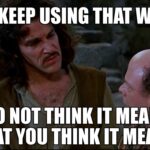What’s a naked slugline?
Actually, even before that — what’s a slugline?
A slugline is just another word for a scene heading.
A naked slugline is a scene heading that has no action line(s) after it. It just sits there, exposed… then goes straight into dialogue.
It’s a bad thing, and I see it far too often in amateur scripts — especially when setting up a phone conversation.
Here’s an example:
Judy picks up her cell phone. Dials a number.
INTERCUT WITH:
INT. DARLENE'S HOUSE - DAY
DARLENE
(into phone)
What's up, Jude?
That’s no good! You need to set the scene for the reader. What’s Darlene doing when she receives the call? Is she studying at a desk? Cooking breakfast? Playing with her cats? Show us.
Without any scene description, depending on what you have in mind, things could be very different.
For example:
INT. DARLENE'S HOUSE - DAY A cranky Darlene pulls off her sleeping mask. Grabs her cell phone from the nightstand. DARLENE What's up, Jude?
Now contrast that with this version:
INT. DARLENE'S HOUSE - DAY Darlene, races to her ringing phone. Takes a deep breath, trying to contain her excitement. Answers. DARLENE What's up, Jude?
With a naked slugline, you have no opportunity to reveal Darlene’s character or circumstance. Don’t leave it up to the reader to fill in the blanks.
Set the scene with an action line or two. Otherwise, it’s lazy writing. Make sense?
NOTES:
- For the properly formatted scenes, I didn’t need to use the parenthetical “(into phone)” because the action lines make it clear who she’s talking to.
- Reminder: Naked sluglines aren’t just found in phone conversations. Any time you go directly from a master scene heading into dialogue, you’re using a naked slugline.





